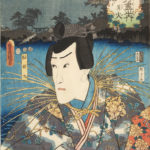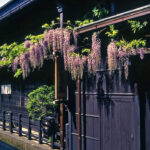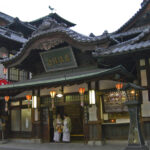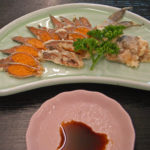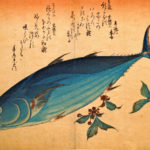In 1975, Mitsugoro Bando VIII was revered as one of the finest actors in Japan. So lofty was his thespian status that two years earlier he had been officially designated as a “Living National Treasure” by the Japanese government, an exalted honor for which any practitioner of a traditional art or craft would most cheerfully swap their eyeteeth. In an elegant Kyoto restaurant, the illustrious Kabuki actor badgered the chef into serving him four portions of the liver of a certain fish. Despite the serving of that commodity being strictly against local ordinances, famed Bando got his wish. One might hope that he enjoyed his meal: it was to be his last. Hours later, he died in his hotel room following paralysis and convulsions. The fish was of course fugu, and it contains one of the most powerful known toxins.
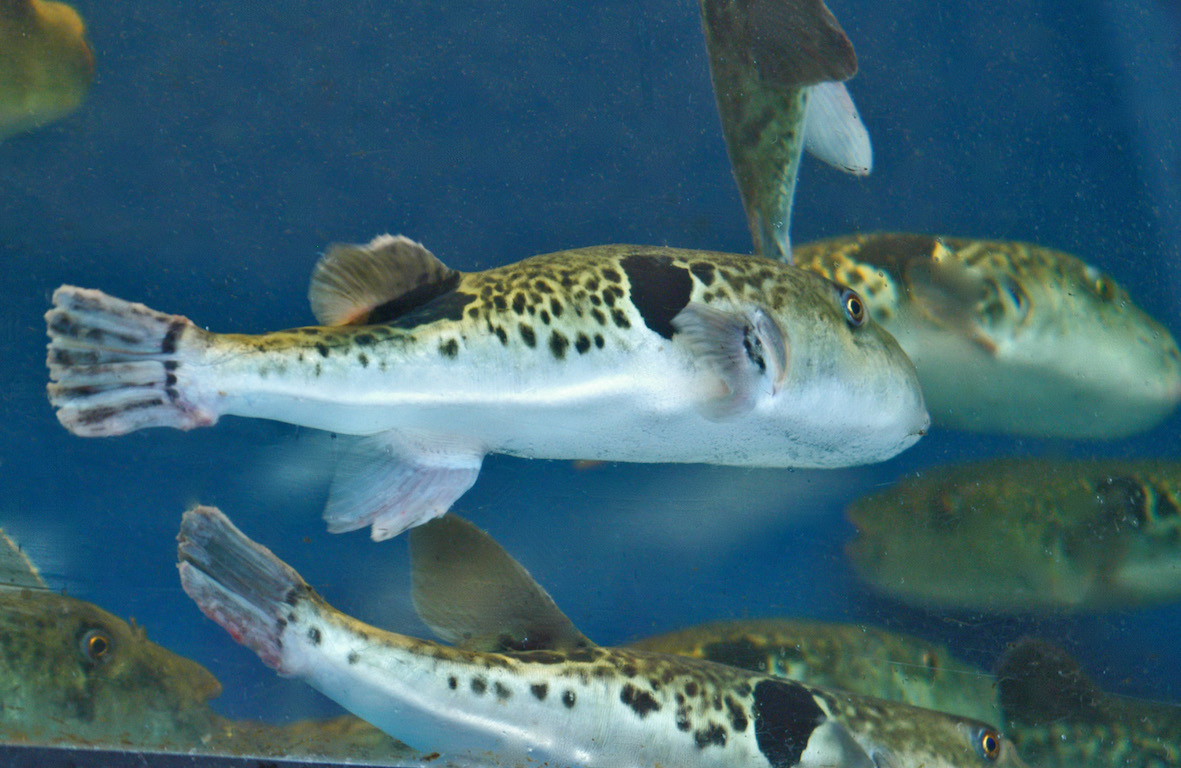
Fugu swimming in a tank at a specialist restaurant await their culinary fate. DAVID CAPEL PHOTO
Fugu are also known as puffer fish, blow fish and globefish, the name deriving from their propensity to inflate their bodies by rapidly pumping water into their stomach. They do so as a defense mechanism and more than double their original size. Spines on the bodies of some fugu species help dissuade would-be predators from making a meal of them. Any attacker deciding to eat the distended fish anyway would not live long to savor the repast owing to the presence in the fugu’s inner organs, eyes and skin of a powerful neurotoxin called tetrodotoxin, which is about a hundred times more toxic by weight than potassium cyanide. In humans, the poison paralyzes the muscles: the victim remains fully conscious as they slowly and painfully die from asphyxiation.
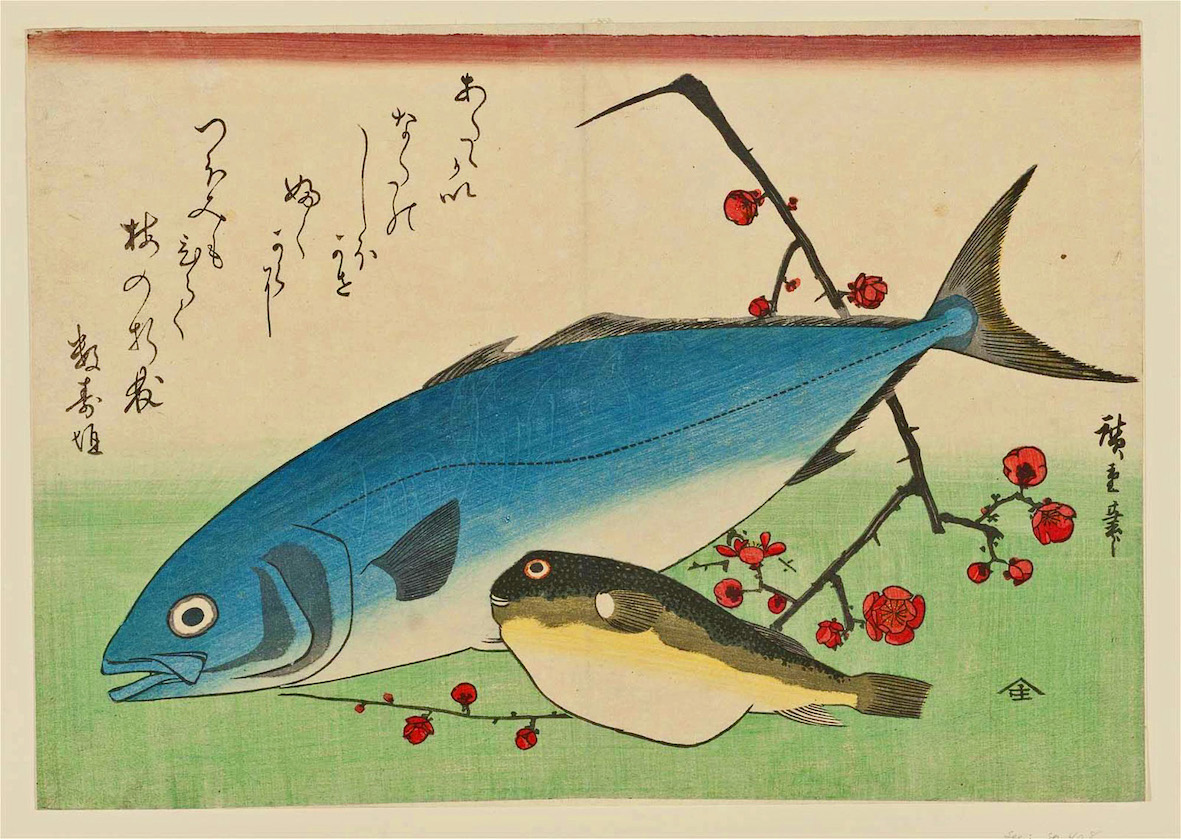
In this ukiyo-e woodblock print from 1832, artist Hiroshige depicts fugu (right) and yellowtail (inada). DAVID CAPEL PHOTO
Interestingly, fugu do not enter this world as any kind of piscine peril: if the fish are raised in filtered, bacteria-free water, they do not become toxic. The process by which fugu gain their toxicity is not completely understood, but it is supposed that they acquire it by eating creatures containing tetrodotoxin-laden bacteria.
As long as it can be properly extracted from all the poisonous bits, the muscle flesh of fugu is perfectly safe. And among individuals not averse to dicing with death, fugu has long been praised as the most delicious of fish. But reflecting the latent lethality, fugu cannot be served to the emperor of Japan and high-ranking members of his family.

At Karato Fish Market in Shimonoseki, a set of tora-fugu (“tiger fugu,” the highest-priced and most highly esteemed species) is presented for customers. DAVID CAPEL PHOTO
Despite the obvious finny fatality, people in Japan have been happily chomping into globefish since forever. Bones and teeth from fugu have been recovered from ancient shell mounds dating back over 2,300 years. The deadly fish makes an appearance in the Nihon shoki, completed in 720 and Japan’s second-oldest chronicle. In the late sixteenth century, consumption of fugu was banned by warlord Toyotomi Hideyoshi after a devastating death toll among his troops—caused by soldiers having too much time on their hands and too little experience with fugu. That ban continued into the Edo period (1603–1867). Despite the prohibition, people in western Japan continued to surreptitiously continue consuming the dangerous comestible and clandestinely developed safe techniques for its preparation.
The ban on the fish continued until 1887, when Hirobumi Ito, Japan’s first prime minister, stayed at a guesthouse in Shimonoseki in the west of the country. Owing to the stormy seas, the landlady was unable to serve him regular fresh fish and found herself obliged to resort to fugu—despite the severe punishment that could be meted out for doing so. For his part, Ito was absolutely delighted with the dish, so much so that he had the local governor lift the ban on the fish the following year.
The city where Ito was so impressed with the dodgy globefish has certainly developed since the days when serving it was all hush-hush. Today, Shimonoseki is widely known as the “fugu capital” of Japan, and it distributes around 80% of the nation’s puffer fish. As might be expected, Shimonoseki is very happy to bask in its top-notch position with the dangerous fish, and fugu—typically in full-on inflation mode—is visually conspicuous everywhere in the city. But the center of all things fugu in Shimonoseki is most definitely its Karato Fish Market, the lively, always-busy spot where customers can purchase and dine on fugu to their heart’s content. And considering the sheer concentration of all those fugu—literally packed to the gills with one of the most powerful known toxins—that market probably has few serious rivals as the single most poison-ridden spot in the whole country.
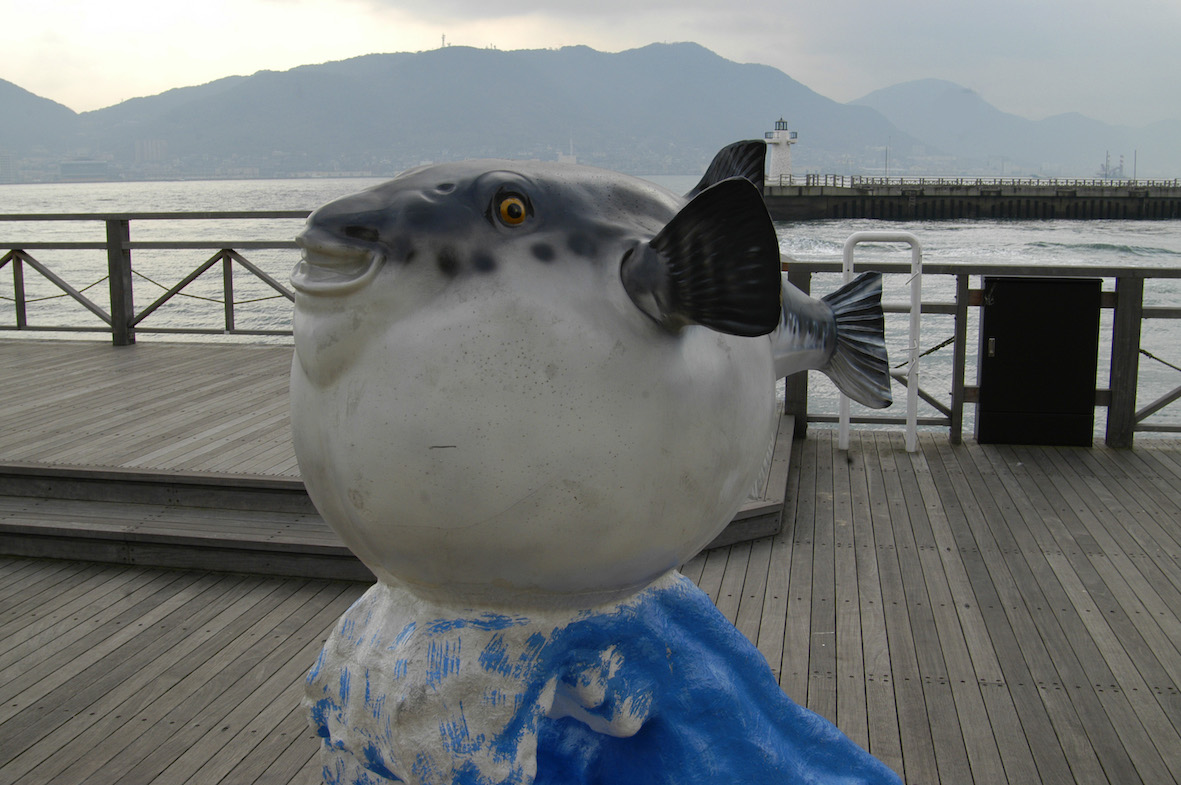
A model of Shimonoseki’s favorite fish makes a bloated appearance outside the city’s central Karato Fish Market. DAVID CAPEL PHOTO
Today, fugu is widely consumed around Japan, but since 1958 chefs have had to earn a license before being allowed to prepare and sell the fish. After training for two or three years, chefs must pass a rigorous examination, which only around one-third are actually able to do. All that stringency means that it is theoretically as safe to down fugu as any other fish. However, it is perhaps not surprising that many Japanese are still scared about the prospect of consuming a meal that could be akin to a dish of rat poison. Others are more scared of the tab: all that stringency does not come cheap, and a night out on the fugu can cost a pretty penny.
Perhaps by way of dodging the cost, aspiring amateur chefs may believe they can dispense with the formalities and that slicing up a fish cannot really be all that difficult. Sadly, a number of them pay for such hubris with their lives. Tetrodotoxin still has no known antidote.
Fugu have exerted an impact in Japanese arts, particularly poetry. In the Edo period, Yosa Buson was widely considered one of Japan’s three greatest poets, and he was a master of the short poetic form that later became internationally known as haiku. In the following piece, Buson poignantly describes the plight of a man, perhaps a jilted lover, who apparently harbors a death wish and believes he should end things gloriously and quickly with a slap-up meal:
Tonight I can’t see
her. I have to give her up.
I will eat fugu.
BY DAVID CAPEL FOR THE JAPAN JOURNAL

